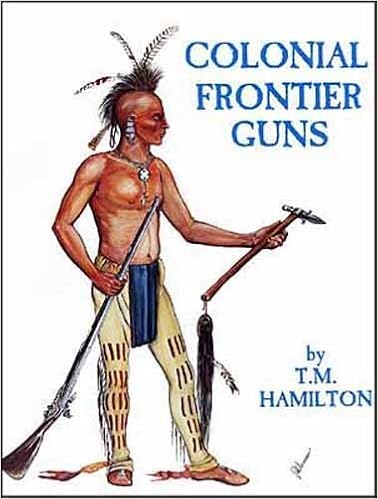I see Type G trade guns and T. M. Hamilton's books and colonial trade guns being referenced in several posts. I think these posts are missing the point. The OP was specifically asking about "
Northwest trade guns with the large bow triggerguard and serpent side plate be found in the the Southern US areas of North and South Carolina in the early to mid 1800s?"
He wasn't seeking information about colonial period trade guns.
I looked through the three books I have in my library by T. M. Hamilton.



All three of these books focus on the colonial period. There is no reference in any of the three to archeological artifacts from a Northwest trade gun--in the South or anywhere else on the continent. Hamilton just wasn't interested in them. He left that area of study to Charles E. Hanson, Jr. and S. James Gooding.
Furthermore, there may be something out there that I'm not aware of, but I don't know of any book that covers trade gun archeological evidence from the 19th century.
There are likely some academic papers written on the subject, and if someone can provide references to them, I would be interested in reading them.
I did find the paper on The Flintlock Site (8JA1763) by Christopher E. Horrell, Della A. Scott-Ireton, Roger C. Smith, James Levy, and Joe Knetsch.
It's conclusions were in part,
Analysis of artifacts recovered from the Flintlock Site and of those left in situ on the river bed produced no archaeological evidence that could be linked conclusively to the 1817 army boat ambush episode. No artifacts were encountered that could positively be identified as belonging to the U.S. Army. Instead, the Flintlock Site collection appears to represent material remnants of cultural activities that took place along the river from the time of prehistoric occupation to the late Colonial and Seminole Period trade and conflict, the development of ante- and post-bellum plantation traffic, turn-of-the-century timber industries, and into modern commercial and recreational river use.
All the gun fragments found at the site, including the Type G, were dated to the 1700s. The report said, "The most significant conclusion derived from the study of these weapons is that they were too old to have been used in the 1817 Scott ambush incident."
The issue of Northwest trade gun parts in the archeological record from the early 1800s in the South is still an open question, for me.
For perspective, I'm posting a map of the US Factories in the South. In parenthesis are the dates that each trading post was active. The Tellico and Hiwassee factories served the Cherokees in eastern Tennessee and western North Carolina and are closest to the area of the OP's original question.

The US trading posts are just one of the possible sources of NW trade guns in the area, though. Private traders were still active in the South in the early 1800s. And as I stated before, the British shipped a large number of arms to the area during the War of 1812.
The Southern Indians utilized rifles earlier and to a greater extent than Indians in other parts of the continent, but why would the smoothbore Type G have been such a popular arm during the colonial period in the South and a smoothbore NW trade gun not be present at all decades later? To suggest that all Southern Indians used rifles is stereotyping them. They were individuals just like everybody else and would have had individual preferences when it came to arms. Some would have preferred rifles, some fowling pieces, and some likely NW trade guns.
I'm not surprised by Mr. Levy's observations about the lack of NW gun parts from Florida. Florida was under Spanish control until 1819. The US conducted on-again-off-again military operations against the Seminole Indians from about 1816 to 1858. At no time did the US have incentive to sanction trade with the Seminole.

